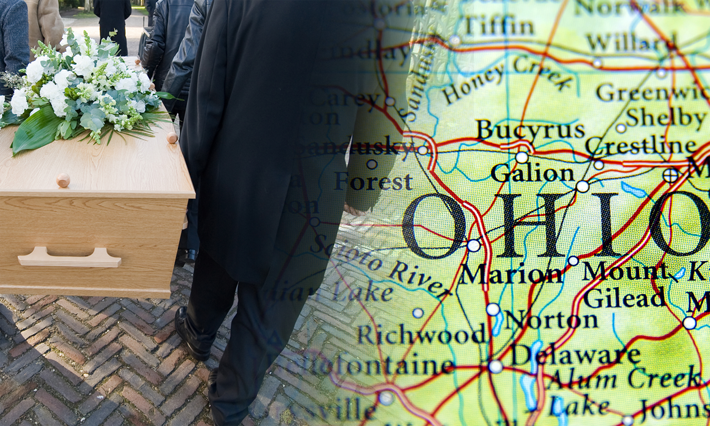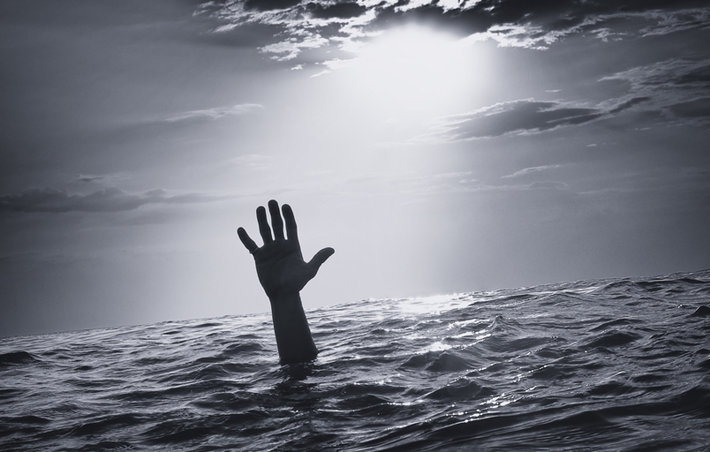Ohio’s Deaths from Opioids Soar Towards 10,000

Ohio is making headlines… and not in a good way. With record-breaking numbers, the devestation that is hitting this state is heartbreaking. In just one county, Montgomery County, Ohio, an estimated 800 people will die from drug overdose.
Imagine a horrendous hurricane that wipes out an entire town. Or a disastrous earthquake that levels most the buildings in a city. Those are the kind of events you might associate with a loss of life totaling 10,000. But an epidemic of opioid overdoses? And just one American state? If Ohio follows its current pattern of overdose deaths, one expert in that state estimates that it will round out 2017 at or above 10,000 deaths.
According to multiple news reports, there are so many people dying from drug overdoses in Ohio that coroners have been running out of storage room. The coroner for Montgomery County reports that 60% to 70% of the deaths he is called to investigate result from overdoses. He called this a “mass-casualty event.”
The World Health Organization defines a mass-casualty event as one that “generates more patients at one time than locally available resources can manage using routine procedures.” As discussed earlier, these events are usually natural disasters, huge chemical spills, sinking ships and similar occurrences. But in the case of drug overdoses in Ohio and many other states, these losses occur over months, not minutes or hours. Despite this apparent abundance of time, Ohio drug rehab centers are till hard pressed to respond in an effective manner.
What Will the Total U.S. Losses Be in 2017?
It’s not possible to estimate the 2017 losses yet—in fact, totals have not been calculated for our losses in 2016. Still, the New York Times collected all the data available, ran the numbers and came up with an early estimate for 2016. In a June 5, 2017 article, they estimated the number of people that lost their lives to drug overdoses in 2016 at somewhere between 59,000 and 65,000. This is a very steep jump from 2015’s 52,000 lives lost, and 2014’s 47,000.
But these are just numbers. Numbers do not evoke the human suffering associated with these overdose deaths. Parents losing their children, children losing their parents, spouses being lost, and America losing the bright potential of all these individuals. The heartbreak goes on endlessly and worst of all, there is no end in sight.
What Can You Do to Help?

There is actually a lot you can do to play a role in turning this situation around. Here are some ideas for you.
- No one wants to be an addict. No one. No matter what a person says to you, he (or she) does not want to struggle every day with needing to find the day’s drugs and risking sickness or death with every dose. Find a rehab program with availability for your loved one and approach him when he is most likely to be sober. If possible, bring one or more people with you who are authorities to the addicted person and present your unified message that rehab starts now because you all love that person and care about his health and future.
- Educate others. There are too many people who think that addicted people chose a degraded life. They may feel that only degraded people end up addicted. But these days, it may only take one small misstep to cause cravings to kick in and draw one in to full-fledged addiction. With methamphetamine, heroin or opioid painkiller abuse, some people say that they knew they were lost the first time they experienced those drugs. And also, these days, some people became addicted after they followed their doctor’s advice exactly.
- Prevent your children and any other young people you know from going down a dangerous path that leads to addiction. Help them choose goals that interest them and help them also get an education, training or experience that will enable them to accomplish those goals.
- With any youth you are responsible for, make it very, very, explicitly clear that you expect no drugs of any kind to be used and no underage alcohol use. Whatever your feeling about marijuana or alcohol use by youth, realize that the use of these substances puts them in contact with people who use life-threatening drugs and it also reduces their ability to make the right choices. They are not well-equipped to make good decisions about their own survival if they are stoned or drunk.
- Ensure medications are stored in locked containers at every moment they are not actually being consumed. Locking medicine cabinets or storage boxes are available online or at home improvement stores. This can seem so inconvenient but it could literally save someone’s life. A small child can’t get into a pillbox in someone’s purse, a curious teen visiting a sick relative can't steal pills from that person’s bedside and an addicted workman or visitor can’t filch drugs from the medicine cabinet while using the bathroom.
- Learn the signs of drug use so you realize when someone needs help. Narconon International offers you plenty of information on spotting drug use. But getting this information is only part of being able to identify drug use. The other shift is refusing to be naive. If a person's life quickly or gradually descends into chaos, suspect drug use. If problems keep coming up and simply can’t be solved, suspect drug use. Due to the changes that drugs make in a person’s mind, he (or she) is likely to deny drug use even if he desperately needs help. Stay helpful until that moment comes when he admits he needs help and asks for it.
- Support drug-free events in your community. Attend planning meetings and request that alcohol be omitted from sporting events or street fairs, or that it be restricted to a small area out of the main event activity areas. Ask if alcohol can be eliminated from stadiums in your town. Look for other ways you can eliminate the presence of addictive substances for your town. Speak up at meetings.
- Talk to teachers and principals to support the most effective drug prevention activities in your community's schools. Ask what programs are being used and what results that program has gotten in this school or others. Insist that only programs that have proven to result in lower drug abuse by students are used.
- Monitor the movies and television shows being watched by your children or your friends. Support those with no drug use or drug or drinking-related themes or those that accurately represent the catastrophes that can occur with underage drinking or drug use.

As it turns out, there actually is much you can do. It will take more than government agencies taking action against drug use. It will take parents, coalitions, schools, entertainment executives, medical and legal professionals and much more, all working together, to start turning these numbers around in the other direction.
When you need drug rehab help, find out how Narconon has been offering real help for more than 50 years. We have helped tens of thousands recover their ability to stay sober and productive. Call us today at 1-800-775-8750.
 ®
®